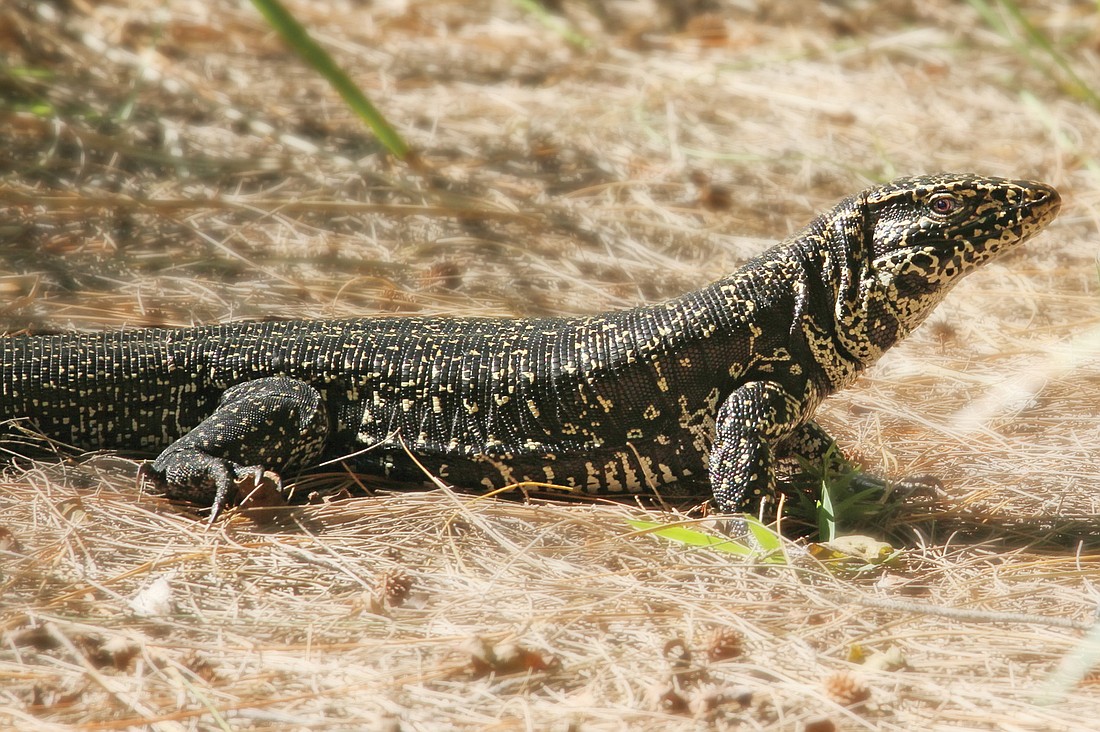- May 30, 2025
-
-
Loading

Loading

Anyone who missed the second Crystal Classic Master Sandsculpting Competition Nov. 10-14 on the Key missed truly extraordinary art. The crowds were understandably big on Saturday and Sunday, but it was easy to get close enough to the sculptures to appreciate the incredible amount of detail.
I confess that, as a horse lover, I was especially excited to learn that “Nightmares” had taken top prize. The manes on those gigantic steeds were so realistic, it was easy to imagine them blowing in the breeze off the Gulf of Mexico.
People were mannerly as they moved from sculpture to sculpture. And I cannot begin to guess how many photographs people took as keepsakes.
Hats off to all the organizers who invested so much time in making the event come alive again this year. What better way to show off the No. 1 beach in America than by transforming that fantastic sand into masterpieces?
No cute critter, this time
Tatiana Staats has done it again, except the most recent subject in her camera’s viewfinder was not an adorable bobcat cub.
Her husband, David, emailed me a few weeks ago with as scary a photograph as I ever have seen. It showed a golden tegu on the Key. Readers may remember that Tatiana sent the Pelican Press a photo in November 2007 of the same type of lizard. This one is 3 feet, 9 inches long — not the sort of creature one would hope to spot on a daily walk.
It took David and Tatiana a short while, and several exchanges with experts, to confirm some facts about the tegu. As usual, David has done such an impeccable job of his research, I feel it best to quote him:
“Is Siesta Key becoming the next Jurassic Park? This 3-foot, 9-inch golden tegu (Tupinambis teguixin), photographed last month on south Siesta Key, is the second confirmed sighting of a golden tegu in four years. Many unconfirmed sightings in recent months have been reported as well.
“One of the seven recognized species of tegus, the golden is a large, ill-tempered native of Colombia’s Amazon Basin. Its bite is seriously infectious as the result of the high bacteria load in its mouth. Its claws are razor sharp. Tegus are adept at burrowing, swimming and tree climbing. They do everything but fly.
“An opportunistic carnivore, the tegus is primarily an egg predator. It will ravage the nests of sea turtles, native birds and gopher tortoises, as well as nests of Florida alligators and crocodiles, for eggs and hatchlings. The tegu’s impact on sea turtle populations, says Mote Marine herpetologist Tony Tucker, can be devastating. In 2008, a tegu destroyed an entire colony of yellow-crowned night heron nests on our Key. On the plus side, tegus will eat iguanas and their eggs.
“Tegu populations are already established in Florida. A breeding colony of the Argentine tegu (T. merianae) exists southeast of Tampa. Last year, wildlife biologist Dennis Giardina of the Florida Fish and Wildlife Conservation Commission removed 13 tegus of various sizes from Everglades National Park, one of which is on exhibit at Miami’s MetroZoo.
“FWC classifies all non-native species according to the degree of threat they pose to human life and the ecology. These classifications are under review. Tegus are proposed to be assigned to Regulatory Class III (high risk of environmental or social/political impact), along with prairie dogs and monk parakeets. The FWC is making a special review of the tegu’s status in Florida. Its report is due by year’s end.
“At present, tegu ownership requires no licensing or special training. Tegus can be bought online. The FWC is considering recommending a $25 licensing fee and online training for prospective tegu owners. Few believe, however, that these nominal requirements will deter irresponsible owners from illegally releasing their tegus into the wild after the lizards have grown too big and too expensive to care for properly.
“What should you do if a tegu moves into your neighborhood? First, avoid contact with it. Second, report it by calling the Sarasota County Call Center at 861-5000.
“‘If the animal is on your private property and is contained, Animal Services will come and pick it up. If the animal is on your private property and not contained, the use of a licensed wildlife trapper is recommended.’
“Tegus are not legally protected except by animal cruelty laws. In other words, trappers may put down tegus humanely but may not read aloud to them from the Congressional record.”
Help wanted
Members of the Siesta Key Village Association’s events committee are seeking lots of help to produce a spectacular Light Up the Village event Nov. 26, the Saturday after Thanksgiving.
They asked me to point out a high school student who needs to fulfill community service requirements for graduation can get those credits by assisting the SKVA members in filling bags for the traditional luminarias and setting up Santa’s Village in Siesta Center, among other activities.
Anyone interested in helping out may just show up at 1 p.m. Friday, Nov. 25, behind Siesta Center or at 12:30 p.m. Nov. 26, in the center’s parking lot. If a later time is better, the SKVA will need help at 4 p.m. Nov. 26, at Siesta Center and again at 5:15 p.m., to help light the luminarias.
To volunteer ahead of time, call Roz Hyman at 349-2770, Ext. 227, or email her at rhyman@sentinelfl.com. Kay Kouvatsos, co-owner of Village Café, is an alternate contact at villagecafe1@comcast.net.